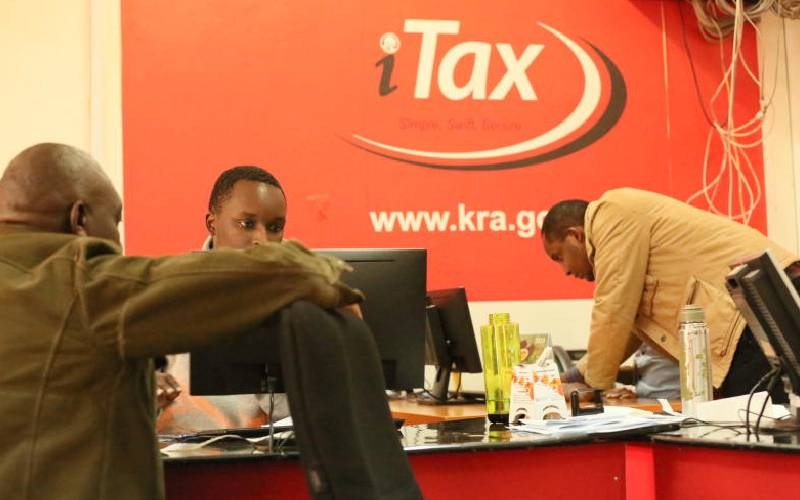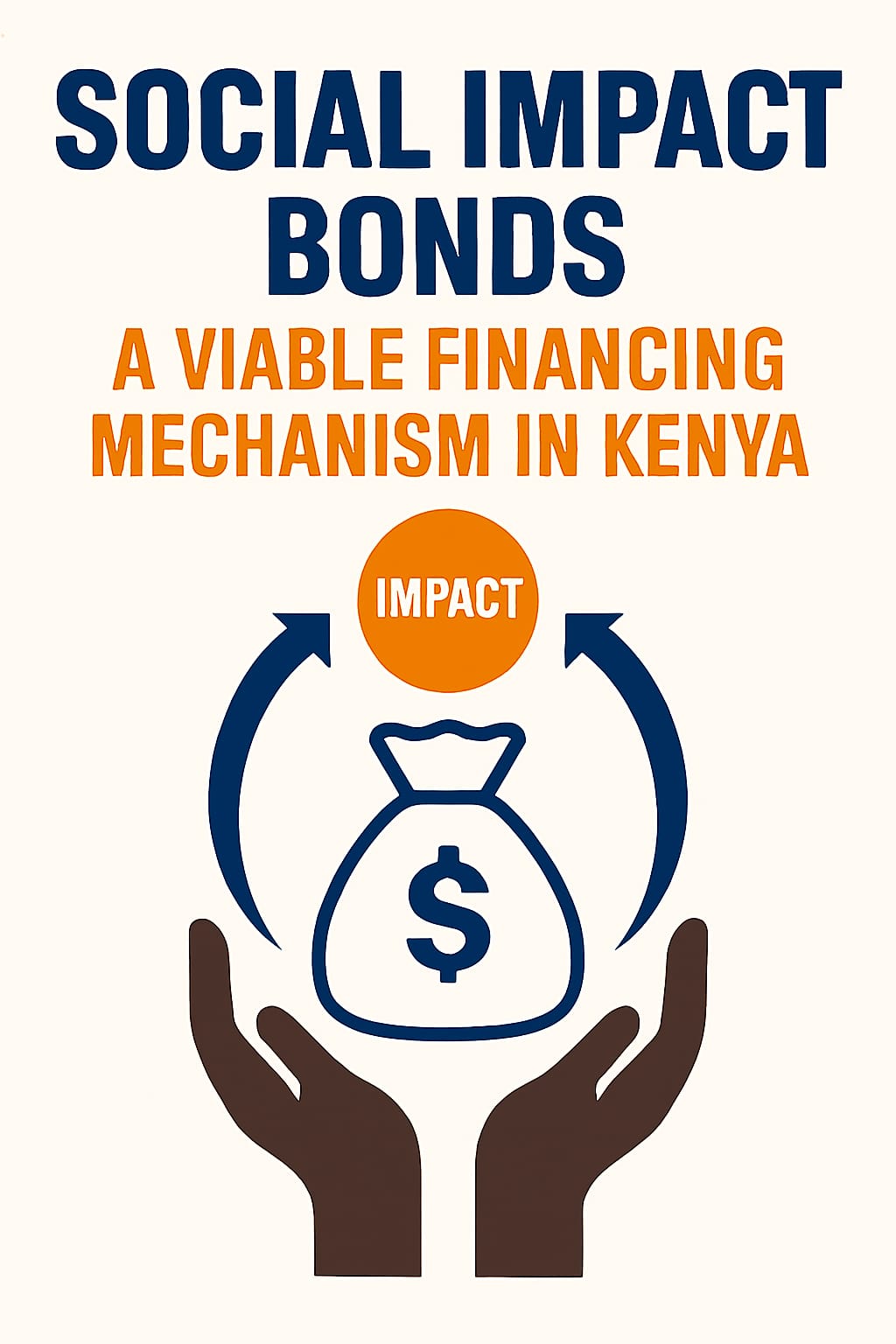Friday, November 7, 2025
Author: Amina Barasa
Category: SMEs, Taxation
⏱️ Estimated Read Time: 8 min read


A small and medium-sized enterprise (SME) is a business with a limited number of employees, typically fewer than 250, and annual revenues below KSh 25M. They are central to economic diversification, productivity, and poverty reduction, hence crucial to Kenya. SMEs foster economic diversification by introducing new products, services, and business models. They lead to poverty reduction by creating employment opportunities, which help improve the living standards of respective communities. According to data from the 2016 Micro, Small and Medium Enterprises (MSME) Survey, MSMEs constitute 98% of all businesses in Kenya and employ over 90% of the total labour force, approximately 14.9 million people. The sector also contributes about 40% to the country's GDP, making it a vital part of the economy. SMEs can achieve higher results; however, their growth in Kenya is hindered by a lot of challenges. For example, a fast-food entrepreneur who wants to open a fast-food kiosk in Nairobi or other cities in Kenya is faced with many regulations and taxes. Despite having talent and drive, they are overwhelmed by permits, licenses, and approvals from different government offices. This paperwork is endless, and wait times are very long. After months of struggle and acquiring the permits, they are now faced with government charges such as taxes and fees that erode the capital available to execute the ambition. This reality is made dimmer by the cost of production, made worse by various bottlenecks and harsh labour laws, making hiring expensive and burdensome. These consequences are far-reaching: stifled economic growth, lost job opportunities, and a perpetual cycle of poverty.
This reality calls policymakers to take a closer look at the impact of their decisions on SMEs and find a way to create a more conducive business environment that allows entrepreneurs to thrive.
Firstly, Kenya’s 3% gross turnover tax rate, the tax rate charged on a business's total gross sales or revenue, is one of the highest among small business regimes. Most developed countries, such as the UK and Germany, don't impose any direct turnover tax; they instead offer VAT exemptions or reduced compliance for small firms. Even where developed economies apply simplified regimes, the effective rate on turnover is usually below 2%. This is clearly represented in Figure 1 below.
Figure 1: Turnover tax rate in Kenya and other countries.
Source: IBFD Global Corporate Tax Handbook (2023).
Kenya, as a developing country, applies a 3% turnover tax rate on small and medium enterprises, while, in contrast, developed countries such as the United Kingdom, Germany, and Switzerland do not impose turnover-based taxes on small businesses. Instead, these countries allow SMEs to operate tax-free at low revenue levels, only requiring taxation once they grow beyond certain turnover thresholds. Meanwhile, India, another developing country like Kenya, imposes a lower turnover-based rate of 1% under its Small Business Composition Scheme. This comparison demonstrates that Kenya’s turnover tax is relatively higher than that of some developed and developing countries, making it more difficult for Kenyan SMEs to reinvest profits, expand, and remain sustainable in the long term.
The Kenyan tax system also affects SMEs with its complexity, as it is always prone to changes. The Kenyan tax regimes are revised annually through the Annual Finance Act. For Example, there was an unforeseen increase in turnover tax through the Finance Act 2025, which raised the turnover tax rate from 1% to 3% on gross sales for SMEs. Small business owners with an annual are now required to pay a higher turnover tax rate. The changes in the withholding tax that were introduced in 1974 under the Income Tax Act have also affected small business owners. The Finance Act 2023 expanded the scope of withholding tax to include digital marketplace payments, and the Tax Laws (Amendment) Act, 2024, introduced a 1.5% withholding tax on scrap sales. Another change in the tax law is the Tax Laws (Amendment) Act 2024, which led to the introduction of the Significant Economic Presence (SEP) that replaced the Digital Service Tax (DST) for businesses providing digital services.
In addition to the annual changes which are disruptive to SMEs, they are faced with many taxes. There are four main taxes that SMEs currently pay in Kenya. The Primary tax for small businesses in Kenya is the Turnover tax. introduced in January 2020 via the Finance Act 2019. It requires small and medium-sized businesses with an annual turnover between Ksh 1 M to Ksh 25 M to pay a tax of 3% on their gross sales. Other taxes paid include Value Added Tax, corporation tax, and withholding tax. The breakdown of the taxes that SMEs are required to pay, together with the eligibility, is shown in Table 1 below
Table 1: Taxes paid by SMEs in Kenya.
| Turnover tax | 3% of gross | sales | SMEs with annual revenues between Ksh 1 M and Ksh 25 M |
| Value added tax | 16% on supplies | taxable | Businesses with a turnover exceeding Ksh 8 M per year. |
| Corporation tax | 30% on profits. | business | Incorporated companies. |
| Withholding tax | 5% for royalties and 15% for digital services | Income sources including dividends, interests, and management fees. | |
Source: Kenya Revenue Authority: Taxation for Companies and Partnerships.
Table 1 summarises the main taxes SMEs in Kenya must pay based on their revenue and business structure. Those earning between Ksh 1 million and Ksh 25 million annually pay a 3% turnover tax on gross sales. Businesses with a turnover above Ksh 8 million are required to charge 16% VAT on taxable supplies. Incorporated companies pay 30% corporate tax on net profits. Additionally, withholding tax applies to specific income streams—5% for royalties and 15% for digital services—covering payments like dividends, interest, and management fees.
The arising and ongoing challenges SMEs face explain the high rate of shutdowns and collapse of SMEs in Kenya and Africa. As shown in Figure 2, SMEs close due to various reasons. The leading causes are profitability and losses. As seen above, the business environment in Kenya is hostile to SMEs, hence contributing to this undesirable reality.
Figure 2: Representation of the distribution of Licensed Establishments by Reasons for change.
Source: Kenya National Bureau of Statistics. Micro, small and medium establishment survey (2016).
According to the Kenya National Bureau of Statistics Micro, Small and Medium Establishment Survey, the leading reason licensed establishments changed or closed their businesses was to pursue more profitable activities at 35.1% followed by business losses at 29.4%. This clearly shows that many SMEs in Kenya are not generating enough profit from their current operations, largely due to high taxation and operational costs. Taxes such as the Turnover Tax, Value Added Tax, and multiple levies continue to strain small businesses, reducing their ability to reinvest and expand. As a result, many entrepreneurs are either forced to close or shift to sectors perceived to be more profitable. This situation poses a significant risk to Kenya’s economy since SMEs provide many employment opportunities. When a large portion of these enterprises becomes unprofitable or exits the market, it leads to reduced job creation, lower household incomes, and slower overall economic growth. Therefore, addressing the heavy tax burden and creating a more supportive business environment is essential to sustain SME profitability and ensure long-term development.
To foster the growth and development of small businesses in Kenya, several key recommendations can be implemented. To address the challenges posed by an unpredictable tax regime, the government should reduce the frequency of discretionary changes to the tax code. Having one tax law that remains stable for a long period allows SMEs to focus on growth, investment and job creation, rather than navigating complex and ever-changing tax requirements.
Public consultations on tax legislative amendments can significantly improve the tax environment for SMEs in Kenya. By engaging SMEs, industry associations, and other stakeholders, the government can create more effective and business-friendly tax policies, promote transparency, and reduce uncertainty. Best practices for public consultations include providing timely notice, clear guidelines, accessible platforms, and follow-up feedback. By adopting these practices, the government can foster a more favourable tax environment, promoting growth and investment in Kenya’s SME sector. The government should also reduce compliance costs and tax rates. Small businesses often divert essential resources to tax compliance that could be better utilised for growth-promoting activities. This highlights the disproportionate burden of taxes and complex tax systems placed on smaller enterprises, threatening their survival. Small businesses face challenges under the standard taxation framework, as they are subject to the same compliance requirements, costs, and tax rates as larger companies. By reducing compliance costs and tax rates, small enterprises can retain more profits, enhancing their financial stability and growth potential.









